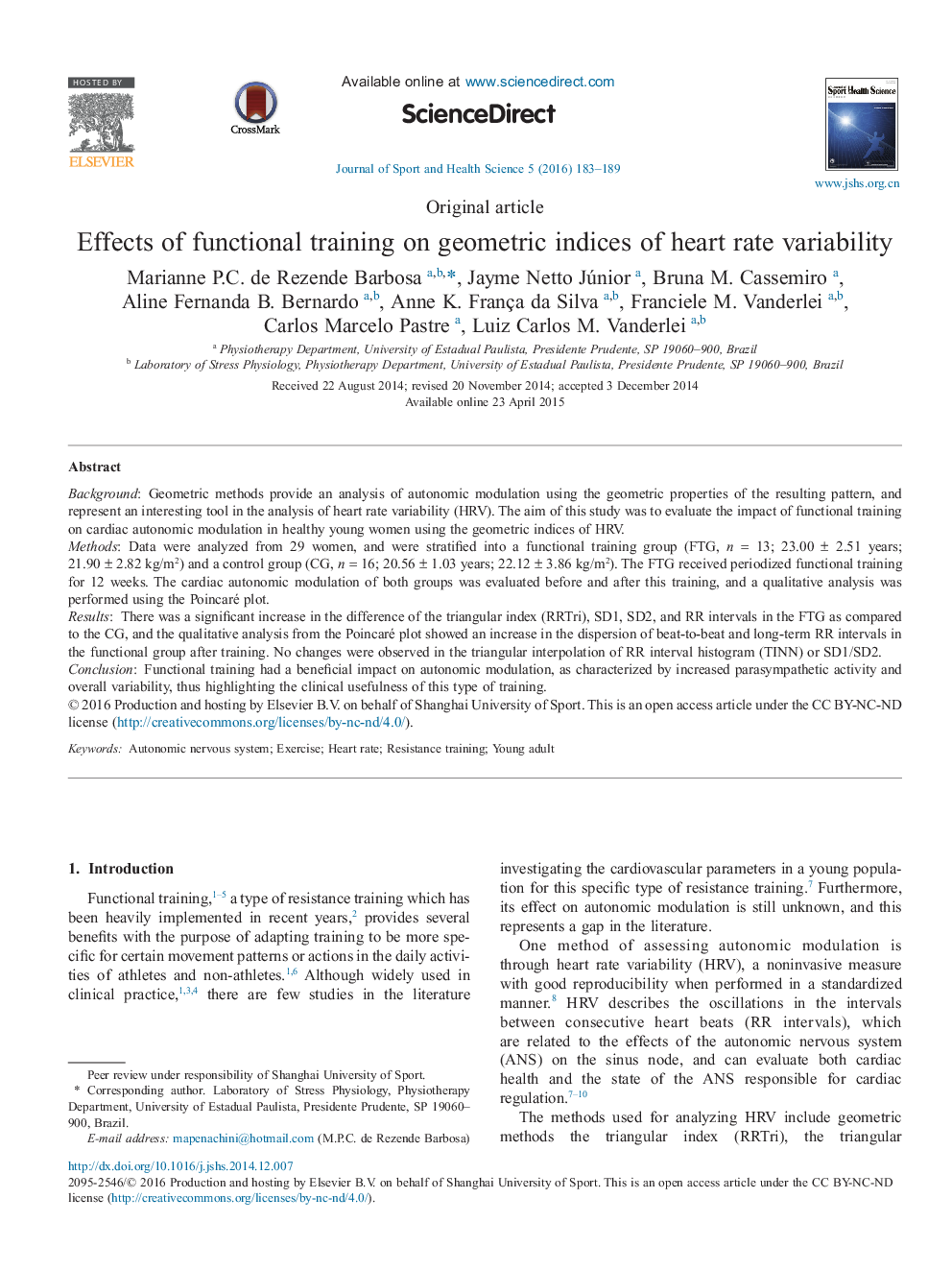| کد مقاله | کد نشریه | سال انتشار | مقاله انگلیسی | نسخه تمام متن |
|---|---|---|---|---|
| 1084037 | 1378330 | 2016 | 7 صفحه PDF | دانلود رایگان |
BackgroundGeometric methods provide an analysis of autonomic modulation using the geometric properties of the resulting pattern, and represent an interesting tool in the analysis of heart rate variability (HRV). The aim of this study was to evaluate the impact of functional training on cardiac autonomic modulation in healthy young women using the geometric indices of HRV.MethodsData were analyzed from 29 women, and were stratified into a functional training group (FTG, n = 13; 23.00 ± 2.51 years; 21.90 ± 2.82 kg/m2) and a control group (CG, n = 16; 20.56 ± 1.03 years; 22.12 ± 3.86 kg/m2). The FTG received periodized functional training for 12 weeks. The cardiac autonomic modulation of both groups was evaluated before and after this training, and a qualitative analysis was performed using the Poincaré plot.ResultsThere was a significant increase in the difference of the triangular index (RRTri), SD1, SD2, and RR intervals in the FTG as compared to the CG, and the qualitative analysis from the Poincaré plot showed an increase in the dispersion of beat-to-beat and long-term RR intervals in the functional group after training. No changes were observed in the triangular interpolation of RR interval histogram (TINN) or SD1/SD2.ConclusionFunctional training had a beneficial impact on autonomic modulation, as characterized by increased parasympathetic activity and overall variability, thus highlighting the clinical usefulness of this type of training.
Journal: Journal of Sport and Health Science - Volume 5, Issue 2, June 2016, Pages 183–189
